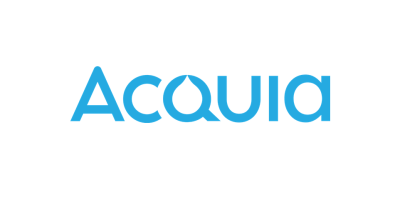How to Choose Your Headless CMS

Collection :
So, you’ve decided to go headless — with your content management system, of course. Choosing a headless CMS over other types of architectures was undoubtedly no easy task. Well, neither is the next one: choosing which headless CMS to implement. This guide will walk you through some of the top considerations.
Choosing a headless CMS has implications across any organization, and the impact will be felt for a long time to come. Developers, marketers, and content creators all have different experiences and needs to be met when it comes to CMS selection. But perhaps the biggest ramification of this decision lands not on any individual role, but on the organization as a whole. After all, the CMS you choose will determine how you reach customers across a range of content channels and touchpoints along their digital journey. For many modern enterprises, the digital experience they offer consumers can make or break their business.
Why choose a headless CMS?
A headless CMS is a content management system in which the back and front ends are fully decoupled to the point where the system actually lacks a front end (or “head”) altogether. Instead, the CMS provides content to multiple channels and devices via API endpoints.
This omnichannel capability is a chief selling point of a headless CMS. Instead of publishing content to a single website or channel, a headless CMS can push content to a variety of places: phones, smartwatches, tablets, IoT devices, CRMs, digital signage — you name it.
Other reasons to choose a headless CMS include its ability to:
- Streamline future redesigns
- Provide a better, more personalized experience for end users
- Accelerate front-end production; and
- Provide more freedom and flexibility to developers and designers
Since a headless CMS allows for any front-end presentation layer or device, developers can create a more future-ready digital experience by building out the user experience using the latest technologies.
5 key considerations for choosing a headless CMS
Once you've decided to go headless, a list of critical considerations naturally follows. Next up, this vital question: Which of the dozens of headless CMS options out there should you choose? This decision shouldn’t be made lightly, but there’s also no reason to be overwhelmed. There are countless features and factors to consider with any software selection, but here are five that are key when choosing a headless CMS.
1. Your unique business needs
The first thing to take into consideration when searching for a headless CMS is exactly what your business needs from such a system. Which channels and devices does your organization want to publish content to? What is the marketing team hoping to get out of a CMS? How about developers? This is particularly important as headless CMSs tend to be more technically demanding than traditional systems, so the development team will play a prominent role in bringing the resulting digital experience to life.
Take stock of what key stakeholders across functions are looking for in a content management system. Team members may not see every item on their CMS wishlist included, but the resulting list of needs and desires should provide a decent roadmap toward the final selection of a headless CMS.
Here are a few other company-specific needs to keep in mind:
- Composability. As business needs evolve, so should your CMS. That’s why a composable architecture that lets your organization spin up new features and experiences will make for a truly future-ready platform. A system like Drupal, for example, boasts around 9,000 free modules and plugins.
- Video and multimedia integrations. Does the system support best-of-breed third-party video services? How about image editing capabilities and content delivery network integration?
- Internationalization and localization. Does your content need to be translated into different languages or otherwise account for other locale-specific nuances?
- Community support. One easy-to-overlook factor is the level of community support and activity around a given headless CMS product. Headless content management systems based on open source technologies like Drupal will tend to have more robust online communities behind them, which can be helpful for content creators and developers alike.
2. Developer functionality and ease of use
Since headless CMSs are a bit more technically oriented — and by definition, their open-ended front-end architecture demands more developer involvement than traditional CMSs — whichever headless CMS you choose will require buy-in from the development team.
Any organization that’s serious about deploying a headless CMS will want to consider its ease of use for developers. Obviously, the front-end coding and UI frameworks will be chosen by the dev team, because the front end is a blank slate. When it comes to specific, developer-focused functionality on the back end, you’ll want to look out for things like which APIs and native SDKs are used and how comfortable developers are with them. Since APIs are so central to how headless systems work, you’ll also want to review details like mature REST APIs, secure and preview APIs, and the actual content management APIs used on the backend. Is there a limit to the API calls that can be made? Details like this are important when it comes to usability for developers. Support for GraphQL data queries and manipulation for APIs is one feature that’s often high on developers’ lists of must-haves.
To make life even easier for developers, you’ll want to ensure that the system’s native SDKs will play nicely with all of the coding frameworks, languages, and technologies the dev team prefers.
3. Omnichannel capability
As mentioned above, the omnichannel capability of a headless CMS is one of its most important features. But instead of standing gobsmaked by buzzwords like “omnichannel,” you should understand exactly what this cross-channel publishing potential means — and which channels matter most to your organization.
Publishing to a website and mobile apps are practically a given, but where else will your content live? If less conventional outputs like IoT devices, digital signage, and voice-controlled UIs are a priority, ensure APIs on the back end are ready to support these channels with relative ease. A good headless CMS will utilize content APIs that can readily push headlines, imagery, body copy, and other bits of content to various content channels in the format appropriate to the device or interface.
It will also automatically generate the metadata needed to maximize the visibility of your content on all platforms. For example, a CMS like Drupal can generate schema.org tags so your content is optimized for voice search.
4. Content and authoring role workflow
With all the technical bells and whistles available, you don’t want to lose sight of what’s at the heart of any modern CMS: the content. CMSs handle content creation and authoring role workflows differently, and you’ll want to make sure the system you choose meets the needs of the authors and editors who fill it up with content every day. Next to developers, these are the people who’ll spend the most time in the CMS, so their comfort level — and, critically, ability to manage content without intervention from those developers – will be crucial to the system’s success.
Authoring roles are also important, especially at larger organizations where many people will use the CMS. Writers, copy editors, legal approvers, marketers, and translators are just a handful of positions that’ll need to access the system’s back end — and each will need different access permissions. In many cases, the number of users is directly tied to the pricing of a CMS, so it’s a good idea to map these early in the process. Ideally, the system will support multiple workflows to properly model the governance necessary for various types of content.
One thing to pay special attention to is how the system handles content previews. This is often a critical aspect of the content management workflow, but since headless systems lack a front-end display layer by default, the option to preview content across devices isn’t always built in.
5. Technical and sales support
Just like any software solution, content management systems require technical and sales support. While on-site developers can often fix many problems, sometimes you need to reach out to the CMS vendor for support. Ensure they have sufficient support staff who are available 24/7, 365 days a year so you can spare your team headaches down the road.
Is a headless CMS a good idea?
If you’ve made it this far through this guide, you probably have a pretty good sense of whether or not a headless CMS is necessary for your organization’s needs. Still unsure? Here are a couple of follow-up questions to address:
- How important is omnichannel publishing to your organization? If you need to push content to numerous devices and interfaces, a headless CMS is likely the way to go. If all you’re really after is a shiny new website with a nice-looking mobile version, a headless CMS might be overkill. Of course, headless and traditional aren’t the only options. Depending on your business needs, you could also consider a hybrid CMS architecture that enables the best of both worlds.
- What does your development team look like? Since a headless CMS lacks a front end and therefore requires a significant amount of custom development, organizations with lean development resources at their disposal may want to think twice. If you have a decent-sized web development team — or can quickly ramp up dev hiring or outsource front-end development — headless is a viable and compelling option.
Getting started with a headless CMS
For the greatest flexibility and agility, a headless CMS is typically the way to go, but it really depends on your organization’s needs and resources. If there’s a desire for truly omnichannel digital content distribution — and, these days, there almost always is — an API-first, headless CMS architecture makes for a powerful back-end repository that can support an omnichannel customer journey.
Want to see a headless CMS in action? Take a closer look at Drupal to learn how Drupal as a headless CMS can power the entire organization. Check out the Acquia CMS Headless Starter Kit for Drupal to accelerate your headless projects.


